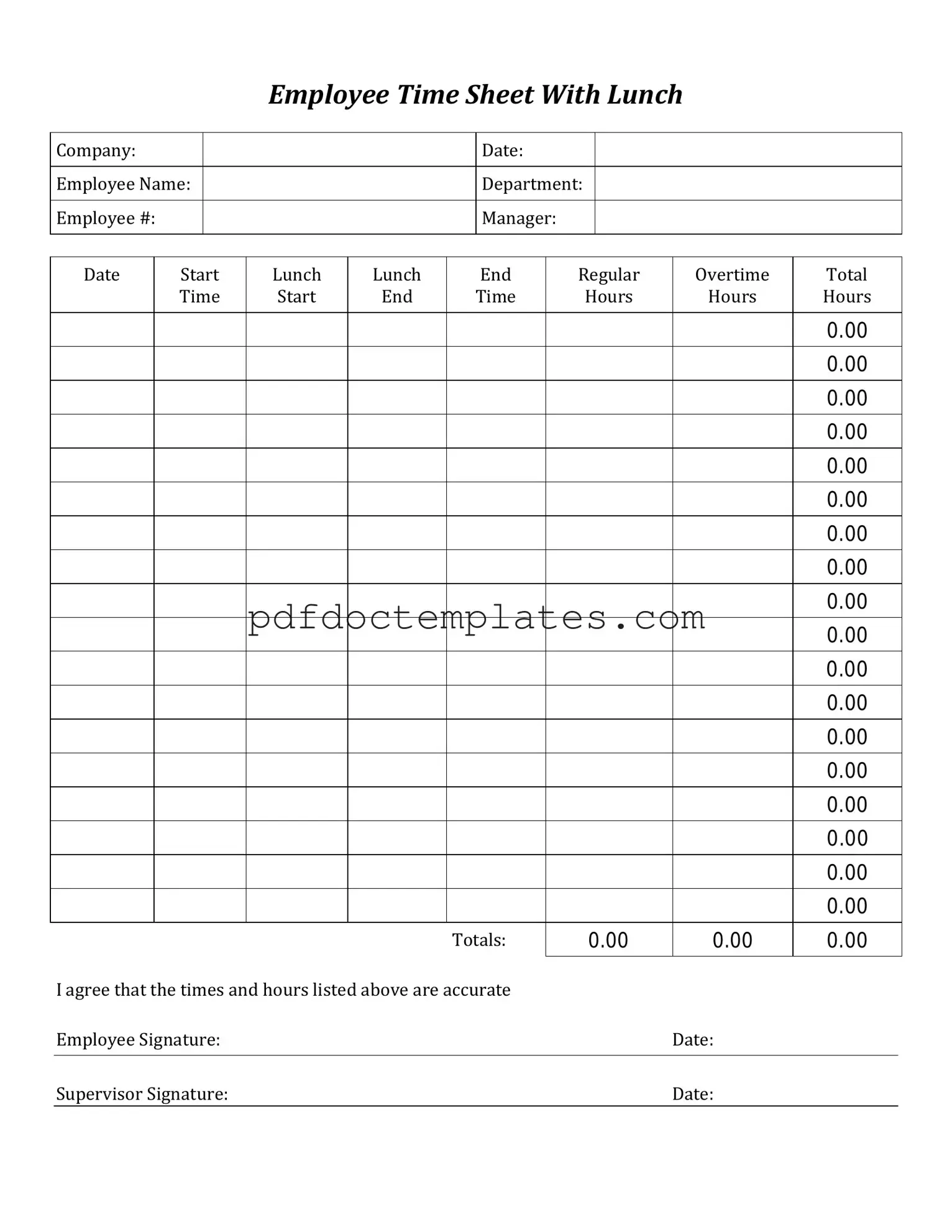Download Time Card Template
The Time Card form is a crucial document used by employees to record their hours worked during a specific pay period. This form ensures accurate payroll processing and helps maintain compliance with labor regulations. Ready to streamline your time tracking? Fill out the form by clicking the button below.
Access Your Document

